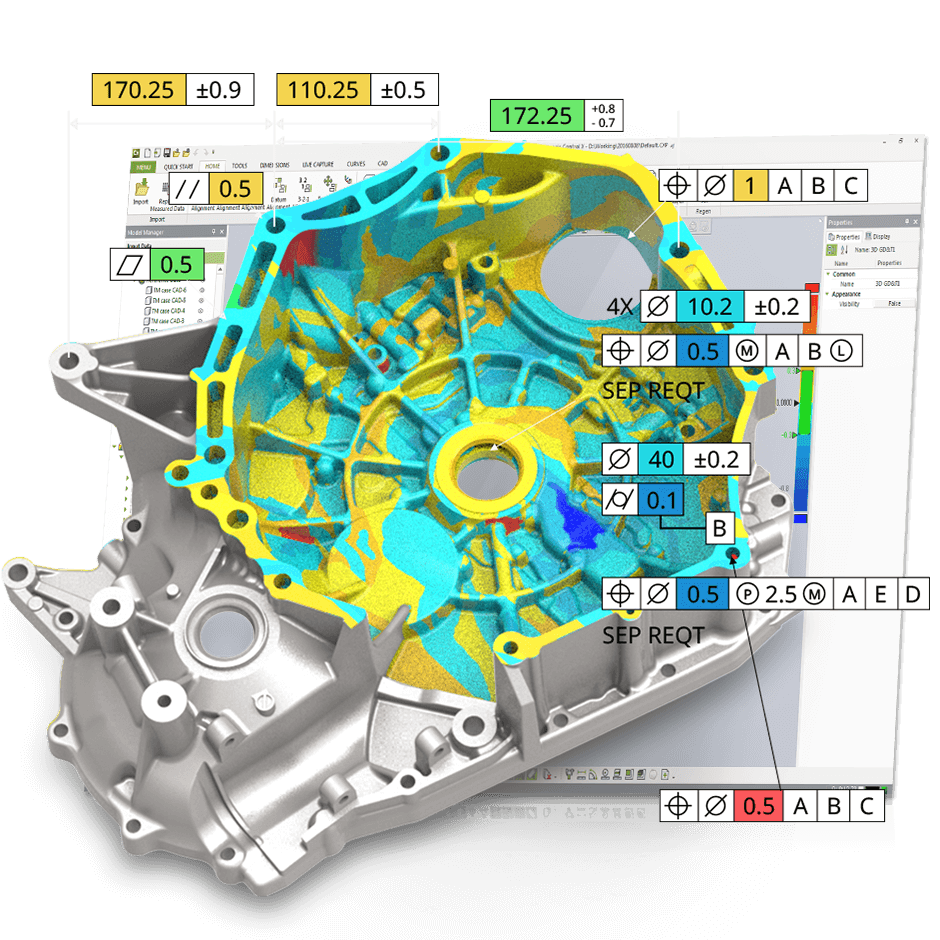Geomagic Studio 8 Manual


Welcome to our Support Center. Find the answers you're looking for about our products and services. You can search through the Knowledge Base. Geomagic Studio. How to Manually Align Scan Data with Manual Registration [8:39]. These Video Product Demos will give the user a general overview of Geomagic Studio and Geomagic.
Rapidly analyze and measure parts for quality control purposes using 3D Systems Geomagic. Some orders may need a manual. In Geomagic Studio 8 that. Download Geomagic Studio 8 - best software for Windows. Geomagic Studio: Geomagic Studio is the industry’s most easy-to-use, intelligent solution for.
Capture [3:59] Learn how to quickly create a cone using your probing device. [6:00] Learn how to quickly create a cylinder using your probing device. [3:40] Learn how to determine a minimum or maximum point using your probing device. [2:32] Learn how to quickly create a plane using your probing device. [2:19] Learn how to quickly create a point target feature using your probing device. [3:08] Learn how to quickly probe a surface point on a planar surface. [3:54] Learn how to use your probing device to determine the distance between a plane and a maximum point.
[2:14] Learn how to use your probing device to measure the angle between two planes. [2:59] Learn how to use your probing device to measure the distance between two points. Registration/Alignment [8:39] Learn how to register scans with one another using Manual Registration. [2:40] Learn how to register scans with one another using Target Registration. Craftsman 31cc* 2-cycle straight shaft weedwackertm gas trimmer manual. [3:42] Learn how to register scans using Global Registration and Merge. [5:24] Learn how to register scans using Global Registratiion. [3:38] Learn how to align scan data to the world coordinate system.
Points [3:11] Learn how to remove unwanted scan data from a point model. [4:28] Learn how to merge multiple point scan objects into a single Polygon object. [3:57] Learn how to take data from points to polygons that can be saved as an STL. [2:57] Learn the effects of the different types of point sample commands. Polygons [5:25] Learn how to use the Remesh command to improve a mesh for surfacing.
[5:12] Learn how to repair a point or polygon model using parts of an existing model or new scan data. [4:50] Learn how to use Relax to correct rough polygon data. [3:56] Learn how to use Relax to correct rough polygon data including use of the curvature map and deviation spectrum.
[6:25] Learn how to fix polygon data such as holes and rough surfaces using the Meshdoctor tool. [4:54] Learn how fix defects and rough areas of a polygon model using ReWrap. [3:38] Learn how to fix divits and bumps on the polygon surface using Defeature.
[2:59] Learn how to smooth the surface using QuickSmooth and optimize edges along a sharp surface. [3:42] Learn how to use this command to prepare the model for the surfacing phase. [2:50] Learn how to project an image onto a polygon model. [4:13] Learn how to detect 3D Features on a polygon model. [2:53] Learn how noise reduction improves the point distrubition on a model.
[2:53] Learn how to decimate a polygon object to reduce the number of triangles on a model. [2:10] Learn how to improve the surface of a polygon model using the Refine command. [2:41] Learn how to mirror a model across a symmetry plane. [2:23] Learn how to use the manifold commands to remove non-manifold triangles. [8:13] Learn how to section polygons using the Trim with Plane, Trim with Curve, and Trim with Sheet commands. [3:52] Learn how to use the Align Plane dialog.
[3:42] Learn how to offset polygon data. [6:21] Learn how to offset an entire model, a selection set, engrave and emboss polygon data. [5:08] Learn how to use the available selection tools. Exact Surfacing [5:18] Learn how to automatically create a NURBS model using AutoSurface. [3:43] Learn how to divide a model into regions for the Exact Surfacing phase. [3:20] Learn how to edit contours after detecting contours in the Exact Surfacing phase.